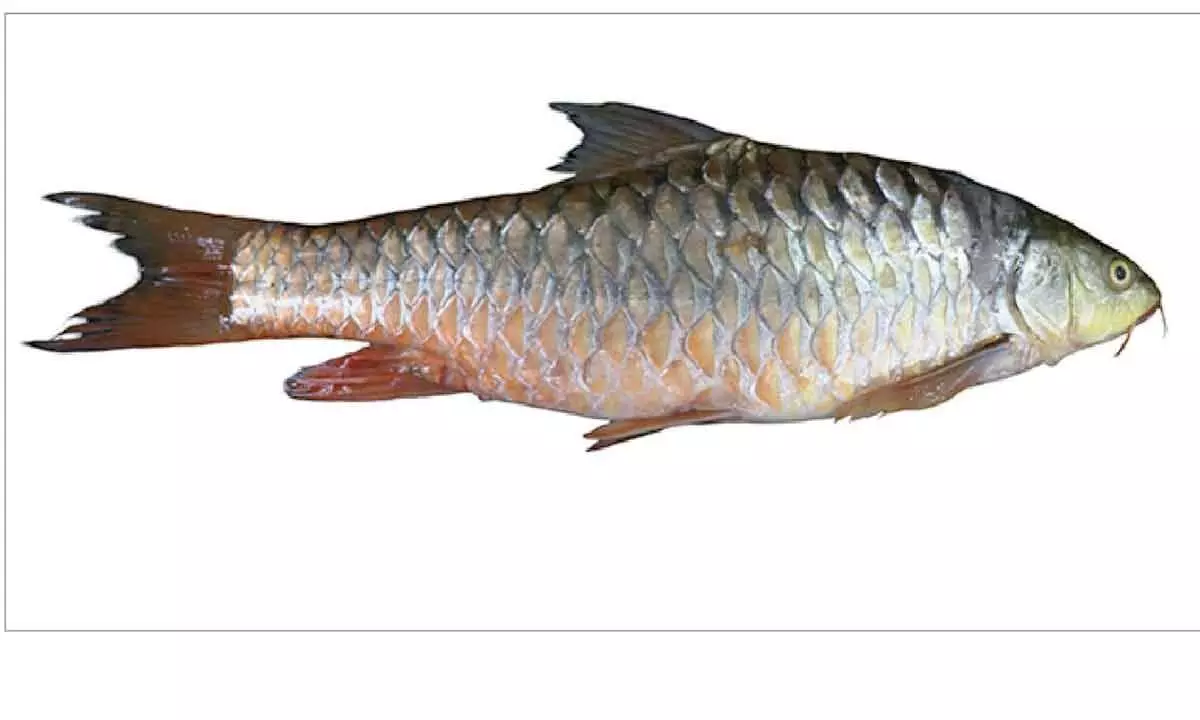Live
- Follow time slot for smooth darshan: TTD to devotees
- Dr. Sadguru Dayanidhi Meets Governor Jishnu Dev Varma at Raj Bhavan, Hyderabad
- Ganja, mobile phones traced in Central Jail
- An inspiring journey of an innovative teacher
- Commission on SC Sub-Castes Classification tours Prakasam
- CM Revanth Reddy Calls for Revival of Telugu Pride at World Telugu Federation Conference
- Crane owners appeal for waiver of life tax on AP registered cranes
- Kannada Writer and Thinker Dr Na. D'Souza Passes Away at 87
- PM to lay stone for rly zone on Jan 8
- Naidu's Kuppam to shine bright with solar power
Just In
Two Mahseer fish species discovered in southern Odisha


Researcher sat Central University of Odisha have discovered two Mahseer fish species from Indravati river system in the State’s southern region.
Bhubaneswar : Researcher sat Central University of Odisha have discovered two Mahseer fish species from Indravati river system in the State’s southern region.
These fish species belong to cyprinidae family, which are large-bodied and big-scaled carps, and are also included under 20 mega fishes of the world. They are often referred to as the ‘king of the Indian aquatic system’.
In Odisha, Mahseer fish species have earlier been reported from Mahanadi and Brahmani rivers and Similipal region. However, the rare species were for the first time spotted in any river in the southern part, the Koraput-based institute said in a statement on Saturday. “It is a sacred fish and worshipped in many Hindu temples in India,” it said. Researchers, led by Prof Sharat Kumar Palita, Dean of School of Biodiversity and Conservation of Natural Resources (SBCNR), discovered the fish species, said the statement.
Under close scrutiny in the university laboratory, the fishes were identified as Mahseer fishes and later confirmed by Zoological Survey of India (ZSI), Kolkata. The ZSI identified the two species as ‘tor tor’ and ‘tor putitora’.
Mahseer inhabits fast-flowing, cold, clear, hilly rivers with rocky bottoms and intermittent pools. Prof Palita initiated the research on Mahseer after joining the Central University of Odisha six years ago. These species were first documented at Indravati Market in Khatiguda, Nabarangpur, and later identified in Indravati reservoir at Mukhiguda, Kalahandi, and Kapur dam, Nabarangpur.
Globally, Mahseer species belong to three genera: Tor, Neolissochilus and Nazirtor. Members of Tor genus are regarded as “True Mahseer.” There are 17 valid Tor species globally found in countries such as India, China, Bangladesh, Nepal, Sri Lanka, Myanmar, Thailand, Indonesia, Pakistan and Afghanistan.
India now hosts nine species of Tor Mahseer. With this discovery, Odisha has four recognised Mahseer species: Tor tor, Tor mahanadicus, Tor putitora and Tor khudree.
Locally, these fish are known as “Kainsari” or “Khaiser” in Khatiguda area of Nabarangpur, while Bengali communities refer to them as “Mahasol.” The term “Mahseer,” originally from “maha sir” (meaning “big head”), is considered erroneous, with “Mahasol” (meaning “big scales”) gaining acceptance.
In India, Mahseer are prized both as game fish and for their culinary value. The Golden Mahseer can grow up to 275 cm in length and weigh up to 54 kg. Several States including Arunachal Pradesh, Himachal Pradesh, Jammu and Kashmir, Uttarakhand, Nagaland and Sikkim have declared Mahseer as their State fish. Odisha has designated Mahanadi Mahseer as its State fish.
Prof Palita emphasised that genetic analysis of these species is nearing completion and conservation measures are urgently needed.

© 2024 Hyderabad Media House Limited/The Hans India. All rights reserved. Powered by hocalwire.com






